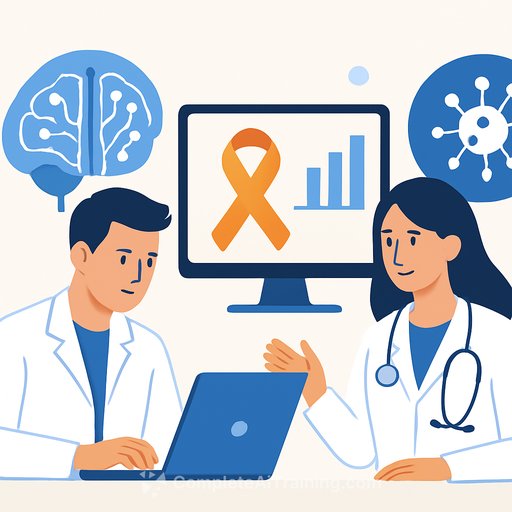How AI Can Be Used to Improve Cancer Research
Chadi Nabhan, Chief Medical Officer and Head of Strategy at Ryght, highlighted a simple truth: technology and AI can empower patients and increase clinical trial participation. At ESMO 2025, Dr. Ines Vaz-Luis delivered a focused talk on practical ways AI can accelerate cancer research. The direction is clear-use AI to remove friction, expand access, and improve evidence quality.
Why Patient Empowerment Matters
Clinical trials stall when eligible patients are hard to find or poorly informed. AI reduces that friction by matching patients to trials faster, explaining options clearly, and supporting clinicians with better tools. The result: more participation, better data, and faster learning cycles.
Practical Applications You Can Implement Now
- Trial matching: Use NLP on EHR data to map eligibility criteria to patient records. Add patient-facing tools that translate criteria into plain language and flag next steps.
- Imaging and pathology: Apply validated models to quantify tumor response, detect small lesions, and standardize reporting. Build QA checks to curb false positives.
- Real-world data: Combine EHRs, PROs, and wearables to create richer endpoints and improve external controls or synthetic arms where appropriate.
- Protocol design: Simulate accrual, test broader inclusion criteria, and pre-empt bottlenecks. Aim to reduce screen failure rates and site burden.
- Safety monitoring: Mine clinical notes, labs, and call-center logs to surface adverse event signals earlier and route them to the right team fast.
- Patient communication: Summarize consent forms, translate materials, and provide 24/7 Q&A with strict guardrails and clear escalation to clinicians.
Guardrails Researchers and Clinicians Need
- Data governance: Clear consent, de-identification, and audit trails across systems.
- Bias and validation: External validation on diverse cohorts. Pre-register metrics and error thresholds.
- Transparency: Document model intent, training data sources, and known failure modes.
- Human oversight: Clinician review for high-stakes outputs; clear accountability.
- Privacy and security: HIPAA/GDPR compliance and routine penetration testing.
- Regulatory alignment: Track guidance for AI in medical software and trial workflows.
Implementation Checklist for Research Centers
- Inventory data sources (EHR, imaging, pathology, PROs) and map integration gaps.
- Pick 1-2 high-impact use cases (e.g., trial matching, AE detection) and define success metrics.
- Form a cross-functional team: oncology, data science, IT, compliance, and patient advocates.
- Decide build vs. buy, run a small pilot, and evaluate against baseline performance.
- Train staff, publish SOPs, and set up continuous monitoring and model drift alerts.
- Engage your IRB early and document risk mitigations.
Metrics That Matter
- Time to identify eligible patients and the percent of eligible patients contacted.
- Enrollment uplift and reduced screen failure rate.
- Turnaround time: scan-to-report and biopsy-to-diagnosis.
- Adverse event detection lead time and severity at detection.
- Patient comprehension scores and satisfaction with trial communication.
- Diversity of enrollment relative to disease demographics.
ESMO 2025: Signals to Watch
Expect more evidence on AI for trial matching, imaging standardization, and patient-centric communication. Talks like the one by Dr. Ines Vaz-Luis point to a practical path: use AI to lower barriers for patients while improving data quality for researchers.
Explore official resources for context and standards: ESMO and ClinicalTrials.gov.
If you work in healthcare or research and want structured training on applied AI skills, see curated options by role at Complete AI Training.
Your membership also unlocks:










